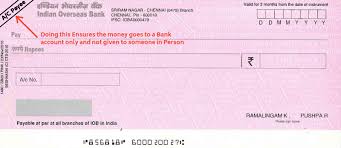In the digital era, the transactions are shifting from physical to online modes, like UPIs, Online banking, etc. However, account payee cheques are still significant for making payments as they are secure, safe, and easy mode of transferring money.
There are various types of cheques such as
- Crossed cheque
- Bearer cheque
- Account payee cheque
What is an account payee cheque?
Before understanding the meaning, let us go through how it works. Basically, there are 3 parties involved, i.e.,
Drawer: He is the person who writes and signs the cheque (having the signing authority). The cheque amount is to be deducted from his account.
Drawee: It is usually the bank on whom the drawer draws the cheque. Now, here the drawer orders the bank to issue/transfer the cheque to the payee.
Payee: Payee is the person whose name is written on the cheque and to whom the drawee makes the final cheque payment. In short, the payee has the right to receive cash against the drawer cheque.
Now, coming to the final meaning:
An account payee cheque can only be deposited to the payee account and hence, considered as a highly secured form of payment.
How to issue an account payee cheque?
Before issuing an account payee cheque to the payee, make sure to cross two parallel lines on the top left corner of the cheque and write “Account payee cheque” between two lines.

Difference between Account payee , crossed, and bearer cheque
| Basis | Account payee cheque | Crossed Cheque | Bearer Cheque |
| Meaning | The amount can only be deposited into the payee’s account | The amount can only be deposited into the payee’s account | Bearer cheques can be enchased by anyone who is holding it over the counter |
| Endorsement * | Payee can’t endorse the cheque | The payee can endorse the cheque to another party and other party to someone other | No endorsement is required; hence one party can hand over to the other party easily. |
| Risk involved | Secured | Secure as compared to a bearer cheque | Highly unsecured |
| How to write a cheque | Cross two parallel lines on the top left corner of the cheque and write “Account payee cheque” in-between two lines. | Cross two parallel lines on the top left corner of the cheque, with or without any word. | Bearer cheques don’t have the word “bearer” on the cheque. |
*payee can endorse the cheque by writing the endorsee’s name on the cheque and signing at the back of the cheque. For example, if the payee doesn’t want to encash the cheque, he can endorse this cheque to some another person by writing the other person’s name and signing the cheque at the back.
Benefits of Account payee cheque:
1. It has the validity of three months.
2. Minimum chances of cheque misuse as only the payee is eligible to withdraw the amount
3. Endorsement is not allowed by the payee
Conclusion:
Summing up about the differing types of cheques, ensure to issue the cheque as per the requirements, whether your purpose is a further endorsement or not.